#Resource Blocks
Explore tagged Tumblr posts
Text
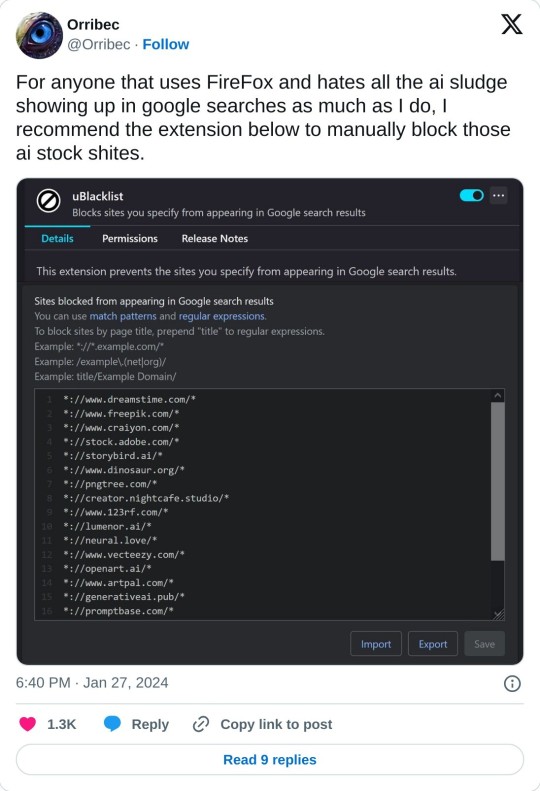
://www.dreamstime.com/ ://www.freepik.com/ ://www.craiyon.com/ ://stock.adobe.com/ ://storybird.ai/ ://www.dinosaur.org/ ://pngtree.com/ ://creator.nightcafe.studio/ ://www.123rf.com/ ://lumenor.ai/ ://neural.love/ ://www.vecteezy.com/ ://openart.ai/ ://www.artpal.com/ ://generativeai.pub/ ://promptbase.com/
Block these sites in your uBlock Origin so you won't see that shit in your searches
76K notes
·
View notes
Text
Other Words for "Look" + With meanings | List for writers
Many people create lists of synonyms for the word 'said,' but what about the word 'look'? Here are some synonyms that I enjoy using in my writing, along with their meanings for your reference. While all these words relate to 'look,' they each carry distinct meanings and nuances, so I thought it would be helpful to provide meanings for each one.
Gaze - To look steadily and intently, especially in admiration or thought.
Glance - A brief or hurried look.
Peek - A quick and typically secretive look.
Peer - To look with difficulty or concentration.
Scan - To look over quickly but thoroughly.
Observe - To watch carefully and attentively.
Inspect - To look at closely in order to assess condition or quality.
Stare - To look fixedly or vacantly at someone or something.
Glimpse - To see or perceive briefly or partially.
Eye - To look or stare at intently.
Peruse - To read or examine something with great care.
Scrutinize - To examine or inspect closely and thoroughly.
Behold - To see or observe a thing or person, especially a remarkable one.
Witness - To see something happen, typically a significant event.
Spot - To see, notice, or recognize someone or something.
Contemplate - To look thoughtfully for a long time at.
Sight - To suddenly or unexpectedly see something or someone.
Ogle - To stare at in a lecherous manner.
Leer - To look or gaze in an unpleasant, malicious way.
Gawk - To stare openly and stupidly.
Gape - To stare with one's mouth open wide, in amazement.
Squint - To look with eyes partially closed.
Regard - To consider or think of in a specified way.
Admire - To regard with pleasure, wonder, and approval.
Skim - To look through quickly to gain superficial knowledge.
Reconnoiter - To make a military observation of a region.
Flick - To look or move the eyes quickly.
Rake - To look through something rapidly and unsystematically.
Glare - To look angrily or fiercely.
Peep - To look quickly and secretly through an opening.
Focus - To concentrate one's visual effort on.
Discover - To find or realize something not clear before.
Spot-check - To examine something briefly or at random.
Devour - To look over with eager enthusiasm.
Examine - To inspect in detail to determine condition.
Feast one's eyes - To look at something with great enjoyment.
Catch sight of - To suddenly or unexpectedly see.
Clap eyes on - To suddenly see someone or something.
Set eyes on - To look at, especially for the first time.
Take a dekko - Colloquial for taking a look.
Leer at - To look or gaze in a suggestive manner.
Rubberneck - To stare at something in a foolish way.
Make out - To manage to see or read with difficulty.
Lay eyes on - To see or look at.
Pore over - To look at or read something intently.
Ogle at - To look at in a lecherous or predatory way.
Pry - To look or inquire into something in a determined manner.
Dart - To look quickly or furtively.
Drink in - To look at with great enjoyment or fascination.
Bask in - To look at or enjoy something for a period of time.
#on writing#creative writing#writing#writing tips#writers block#how to write#thewriteadviceforwriters#writeblr#writers and poets#writers on tumblr#novel writing#fiction writing#romance writing#writing advice#writing blog#writing characters#writing community#writing help#writing ideas#writing inspiration#writing guide#writing prompts#writing a book#writing resources#writing reference#writing tips and tricks#writers#writing tools#writing life#writing software
19K notes
·
View notes
Text
Writing Tips Master Post
Edit: Some posts may be deleted
Character writing/development:
Character Arcs
Making Character Profiles
Character Development
Comic Relief Arc
Internal Conflict
Character Voices
Creating Distinct Characters
Creating Likeable Characters
Writing Strong Female Characters
Writing POC Characters
Building Tension
Writing Grumpy x Sunshine Tropes
Writing Sexuality & Gender
Writing Manipulative Characters
Writing Mature Young Characters
Plot devices/development:
Intrigue in Storytelling
Enemies to Lovers
Alternatives to Killing Characters
Worldbuilding
Misdirection
Things to Consider Before Killing Characters
Foreshadowing
Narrative (+ how to write):
Emphasising the Stakes
Avoid Info-Dumping
Writing Without Dialogue
1st vs. 2nd vs. 3rd Perspective
Fight Scenes (+ More)
Transitions
Pacing
Writing Prologues
Dialogue Tips
Writing War
Writing Cheating
Writing Miscommunication
Writing Unrequited Love
Writing a Slow Burn Btwn Introverts
Writing Smut
Writing Admiration Without Attraction
Writing Dual POVs
Writing Unreliable Narrators
Worldbuilding:
Worldbuilding: Questions to Consider
Creating Laws/Rules in Fantasy Worlds
Book writing:
Connected vs. Stand-Alone Series
A & B Stories
Writer resources:
Writing YouTube Channels, Podcasts, & Blogs
Online Writing Resources
Outlining/Writing/Editing Software
Translation Software for Writing
Writer help:
Losing Passion/Burnout
Overcoming Writer's Block
Fantasy terms:
How To Name Fantasy Races (Step-by-Step)
Naming Elemental Races
Naming Fire-Related Races
How To Name Fantasy Places
Ask games:
Character Ask Game #1
Character Ask Game #2
Character Ask Game #3
Miscellaneous:
Writing Tips
Writing Fantasy
Miscommunication Prompts
Variety in Sentence Structure (avoiding repetition)
#masterlist#masterpost#writeblr#writing#writing tips#writing advice#writing help#writing resources#author resources#writer resources#creative writing#character writing#character development#plot development#narrative#book writing#writers block#writer stuff#writer things#fantasy writing#writer ask game#deception-united
29K notes
·
View notes
Text
Principles and Laws of Magic for Fantasy Writers
Fundamental Laws
1. Law of Conservation of Magic- Magic cannot be created or destroyed, only transformed.
3. Law of Equivalent Exchange- To gain something, an equal value must be given.
5. Law of Magical Exhaustion- Using magic drains the user’s energy or life force.
Interaction and Interference
4. Law of Magical Interference- Magic can interfere with other magical effects.
6. Law of Magical Contamination- Magic can have unintended side effects.
8. Law of Magical Inertia- Magical effects continue until stopped by an equal or greater force.
Resonance and Conditions
7. Law of Magical Resonance- Magic resonates with certain materials, places, or times.
9. Law of Magical Secrecy- Magic must be kept secret from the non-magical world.
11. Law of Magical Hierarchy- Different types of magic have different levels of power and difficulty.
Balance and Consequences
10. Law of Magical Balance- Every positive magical effect has a negative consequence.
12. Law of Magical Limitation- Magic has limits and cannot solve every problem.
14. Law of Magical Rebound- Misused magic can backfire on the user.
Special Conditions
13. Law of Magical Conduits- Certain objects or beings can channel magic more effectively.
15. Law of Magical Cycles- Magic may be stronger or weaker depending on cycles (e.g., lunar phases).
17. Law of Magical Awareness- Some beings are more attuned to magic and can sense its presence.
Ethical and Moral Laws
16. Law of Magical Ethics- Magic should be used responsibly and ethically.
18. Law of Magical Consent- Magic should not be used on others without their consent.
20. Law of Magical Oaths- Magical promises or oaths are binding and have severe consequences if broken.
Advanced and Rare Laws
19. Law of Magical Evolution- Magic can evolve and change over time.
20. Law of Magical Singularities- Unique, one-of-a-kind magical phenomena exist and are unpredictable.
Unique and Imaginative Magical Laws
- Law of Temporal Magic- Magic can manipulate time, but with severe consequences. Altering the past can create paradoxes, and using time magic ages the caster rapidly.
- Law of Emotional Resonance- Magic is amplified or diminished by the caster’s emotions. Strong emotions like love or anger can make spells more powerful but harder to control.
- Law of Elemental Harmony- Magic is tied to natural elements (fire, water, earth, air). Using one element excessively can disrupt the balance and cause natural disasters.
- Law of Dream Magic- Magic can be accessed through dreams. Dreamwalkers can enter others’ dreams, but they risk getting trapped in the dream world.
- Law of Ancestral Magic- Magic is inherited through bloodlines. The strength and type of magic depend on the caster’s ancestry, and ancient family feuds can influence magical abilities.
- Law of Symbiotic Magic- Magic requires a symbiotic relationship with magical creatures. The caster and creature share power, but harming one affects the other.
- Law of Forgotten Magic- Ancient spells and rituals are lost to time. Discovering and using forgotten magic can yield great power but also unknown dangers.
- Law of Magical Echoes- Spells leave behind echoes that can be sensed or traced. Powerful spells create stronger echoes that linger longer.
- Law of Arcane Geometry- Magic follows geometric patterns. Spells must be cast within specific shapes or alignments to work correctly.
- Law of Celestial Magic- Magic is influenced by celestial bodies. Spells are stronger during certain astronomical events like eclipses or planetary alignments.
- Law of Sentient Magic- Magic has a will of its own. It can choose to aid or hinder the caster based on its own mysterious motives.
- Law of Shadow Magic- Magic can manipulate shadows and darkness. Shadowcasters can travel through shadows but are vulnerable to light.
- Law of Sympathetic Magic- Magic works through connections. A spell cast on a representation of a person (like a doll or portrait) affects the actual person.
- Law of Magical Artifacts- Certain objects hold immense magical power. These artifacts can only be used by those deemed worthy or who possess specific traits.
- Law of Arcane Paradoxes- Some spells create paradoxes that defy logic. These paradoxes can have unpredictable and often dangerous outcomes.
- Law of Elemental Fusion- Combining different elemental magics creates new, hybrid spells with unique properties and effects.
- Law of Ethereal Magic- Magic can interact with the spirit world. Ethereal mages can communicate with spirits, but prolonged contact can blur the line between life and death.
- Law of Arcane Symbiosis- Magic can bond with technology, creating magical machines or enchanted devices with extraordinary capabilities.
- Law of Dimensional Magic- Magic can open portals to other dimensions. Dimensional travelers can explore alternate realities but risk getting lost or encountering hostile beings.
- Law of Arcane Sacrifice- Powerful spells require a sacrifice, such as a cherished memory, a personal item, or even a part of the caster’s soul.
#writer#writing#writer things#writerblr#writerscorner#writing inspiration#writing tips#author#writers and poets#ao3 writer#writeblr#fantasy writer#sci fi and fantasy#writing inspo#writing resources#dnd campaign#dnd character#character development#original character#amwriting#writers community#writer stuff#writing blog#writers block#writerscommunity#worldbuilding#world building#fantasy series
6K notes
·
View notes
Text
Another Topics List
Word lists may be helpful for some people to overcome writer's block.
PERSONAL FEELINGS, OPINIONS, AND EXPERIENCES (Adjectives)

PLACES: Buildings

PLACES: Countryside

PLACES: Towns & City

WEATHER

Source: Cambridge English: Preliminary and Preliminary for Schools Vocabulary List (2012)
More: Word Lists ⚜ Topics Lists ⚜ Writing Resources PDFs
#words#writeblr#studyblr#langblr#writers on tumblr#writing prompt#poetry#topics#poets on tumblr#spilled ink#literature#writer's block#writing inspiration#creative writing#lit#writing reference#topics list#writing resources
5K notes
·
View notes
Note
how do you write a liar?
How to Write Liars Believably
Language
The motive of every goal is the make the lie seem plausible while taking blame off the speaker, so liars will often project what they say to a third party: "Katie said that..."
Referring to third parties as "they" rather than he or she
In the case of a deliberate lie prepped beforehand, there will be an overuse of specific names (rather than pronouns) as the speaker tries to get the details right.
Overuse of non-committal words like "something may have happened"
Masking or obscuring facts like "to the best of my knowledge" and “it is extremely unlikely," etc.
Avoiding answers to specific, pressing questions
Voice
There's isn't a set tone/speed/style of speaking, but your character's speech patten will differ from his normal one.
People tend to speak faster when they're nervous and are not used to lying.
Body Language
Covering their mouth
Constantly touching their nose
fidgeting, squirming or breaking eye contact
turning away, blinking faster, or clutching a comfort object like a cushion as they speak
nostril flaring, rapid shallow breathing or slow deep breaths, lip biting, contracting, sitting on your hands, or drumming your fingers.
Highly-trained liars have mastered the art of compensation by freezing their bodies and looking at you straight in the eye.
Trained liars can also be experts in the art of looking relaxed. They sit back, put their feet up on the table and hands behind their head.
For deliberate lies, the character may even carefully control his body language, as though his is actually putting on a show
The Four Types of Liars
Deceitful: those who lie to others about facts
2. Delusional: those who lie to themselves about facts
3. Duplicitious: those who lie to others about their values
Lying about values can be even more corrosive to relationships than lying about facts.
4. Demoralized: those who lie to themselves about their values
Additional Notes
Genuine smiles or laughs are hard to fake
Exaggerations of words (that would normally not be emphasized) or exaggerated body language
Many savvy detectives ask suspects to tell the story in reverse or non-linear fashion to expose a lie. They often ask unexpected, or seemingly irrelevant questions to throw suspects off track.
#writers block#writing#writers and poets#creative writing#writers on tumblr#creative writers#helping writers#let's write#poets and writers#writeblr#resources for writers#writers of tumblr#writers life#writers community#writerscommunity#writer things#writing practice#writing prompt#writing community#writing inspiration#writing advice#writing tips#on writing#writer#writing questions#writing quotes#writing problems#writing process#writing progress
7K notes
·
View notes
Text
HOW TO GIVE PERSONALITY TO A CHARACTER
Giving personality to a character is an essential part of character development in storytelling, whether you're writing a novel, screenplay, or creating a character for a role-playing game. Here are some steps and considerations to help you give personality to your character:
Understand Their Backstory:
Start by creating a detailed backstory for your character. Where were they born? What were their childhood experiences like? What significant events have shaped their life? Understanding their past can help you determine their motivations, fears, and desires.
2. Define Their Goals and Motivations:
Characters often become more interesting when they have clear goals and motivations. What does your character want? It could be something tangible like a job or a romantic relationship, or it could be an abstract desire like happiness or freedom.
3. Determine Their Strengths and Weaknesses:
No one is perfect, and characters should reflect this. Identify your character's strengths and weaknesses. This can include physical abilities, intellectual skills, and personality traits. Flaws can make characters relatable and three-dimensional.
4. Consider Their Personality Traits:
Think about your character's personality traits. Are they introverted or extroverted? Shy or outgoing? Kind or selfish? Create a list of traits that describe their character. You can use personality frameworks like the Myers-Briggs Type Indicator or the Big Five Personality Traits as a starting point.
5. Give Them Quirks and Habits:
Quirks and habits can make a character memorable. Do they have a specific way of speaking, a unique fashion style, or an unusual hobby? These details can help bring your character to life.
6. Explore Their Relationships:
Characters don't exist in isolation. Consider how your character interacts with others. What are their relationships like with family, friends, and enemies? These relationships can reveal a lot about their personality.
7. Show, Don't Tell:
Instead of explicitly telling the audience about your character's personality, show it through their actions, dialogue, and decisions. Let the reader or viewer infer their traits based on their behavior.
8. Create Internal Conflict:
Characters with internal conflicts are often more engaging. What inner struggles does your character face? These can be related to their goals, values, or past experiences.
9. Use Character Arcs:
Consider how your character will change or grow throughout the story. Character development is often about how a character evolves in response to the events and challenges they face.
10. Seek Inspiration:
Draw inspiration from real people, other fictional characters, or even historical figures. Study how people with similar traits and backgrounds behave to inform your character's actions and reactions.
11. Write Dialogue and Inner Monologues:
Writing dialogue and inner monologues from your character's perspective can help you get inside their head and understand their thought processes and emotions.
12. Consider the Setting:
The setting of your story can influence your character's personality. For example, a character who grows up in a war-torn environment may have a different personality than one raised in a peaceful, affluent society.
13. Revise and Refine:
Don't be afraid to revise and refine your character as you write and develop your story. Characters can evolve and change as the narrative unfolds.
Remember that well-developed characters are dynamic and multi-faceted. They should feel like real people with strengths, weaknesses, and complexities. As you write and develop your character, put yourself in their shoes and think about how they would react to various situations. This will help you create a compelling and believable personality for your character.
#writeblr#writing advice#creative writing#writerscommunity#writer problems#writing resources#writing community#writers on tumblr#writers block#the writer struggle#writing tips#writers#uservolkova
13K notes
·
View notes
Text
Steps to Write Compelling Plot Twists

follow for more tips 💋 || request writing tips 💌
1. Plan the Twist Early
Decide the Purpose: Determine how the twist advances the story or challenges the characters.
Foreshadow Strategically: Seed subtle clues throughout the narrative that hint at the twist without giving it away.
2. Build Tension and Expectations
Create a Red Herring: Introduce elements that mislead the audience into expecting a different outcome.
Heighten Stakes: Ensure the events leading up to the twist are emotionally engaging and meaningful.
3. Deliver the Twist Impactfully
Time it Right: Place the twist at a moment of high tension or when it feels least expected but still logical.
Use Reversal or Revelation: Employ one of two main twist types:
Reversal: A situation is the opposite of what the audience believed.
Revelation: New information changes the context of prior events.
4. Maintain Credibility
Anchor in Logic: Ensure the twist is believable within the story’s world and doesn’t feel contrived.
Align with Characters: Make sure the twist fits with established character motivations and actions.
5. Reflect the Impact
Affect the Narrative: Show how the twist changes the story’s direction or character dynamics.
Re-examine Earlier Clues: Allow the audience to realize how the twist was set up through earlier hints.
Examples of Plot Twists in Films and Books
1. Film Examples
The Sixth Sense: The revelation that Dr. Malcolm Crowe is dead reframes the entire story and previous interactions.
Fight Club: The twist that Tyler Durden and the narrator are the same person shocks the audience and redefines the plot.
Parasite: The discovery of the secret bunker adds unexpected layers of tension and tragedy.
2. Book Examples
Gone Girl by Gillian Flynn: Amy's manipulation and fake disappearance drastically shift the narrative’s direction.
And Then There Were None by Agatha Christie: The reveal of the murderer’s identity ties all the deaths to a chilling plan.
Harry Potter and the Prisoner of Azkaban by J.K. Rowling: The twist that Sirius Black is not the villain but Harry’s ally surprises and deepens the story.

Follow || Like || Comment || Repost || My Novel


thank you, i am farkle :)
#౨ৎ a.a.walker's tips ౨ৎ#writer#writers on tumblr#creative writing#academia#artists on tumblr#booklr#aspiring author#college#nostalgia#on writing#writing tips and tricks#writing help#writing advice#writing resources#writing stuff#fiction writing#writing tips#storytelling#write#writeblr#writers and poets#writerscommunity#writers#narrative#writing#plot twists#how to write#writers block
1K notes
·
View notes
Text
Terraform Import Existing Resource: Ultimate Guide
Terraform Import Existing Resource: Ultimate Guide @vexpert #vmwarecommunities #homelab #100daysofhomelab #Terraform #TerraformImport #ConfigDrivenImport #CloudInfrastructureManagement #Terraform1.5 #EC2InstanceImport #TerraformState #terraformstate
Infrastructure as code (IaC) has become a standard for managing complex IT infrastructures. Terraform, a key player in the IaC sphere, is quite familiar to DevOps engineers and developers alike. One of the essential commands within the Terraform toolset is the terraform import command allowing the import of existing resources. There are some challenges with the legacy terraform import command.…

View On WordPress
#Cloud Infrastructure Management#Config-Driven Import#EC2 Instance Import#Resource Blocks#terraform#Terraform 1.5#Terraform Configuration#Terraform Import#Terraform Import Module#Terraform State
0 notes
Text
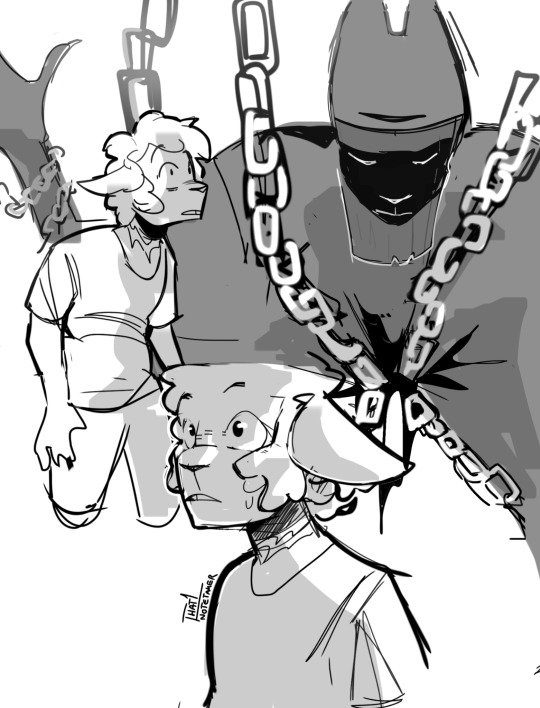
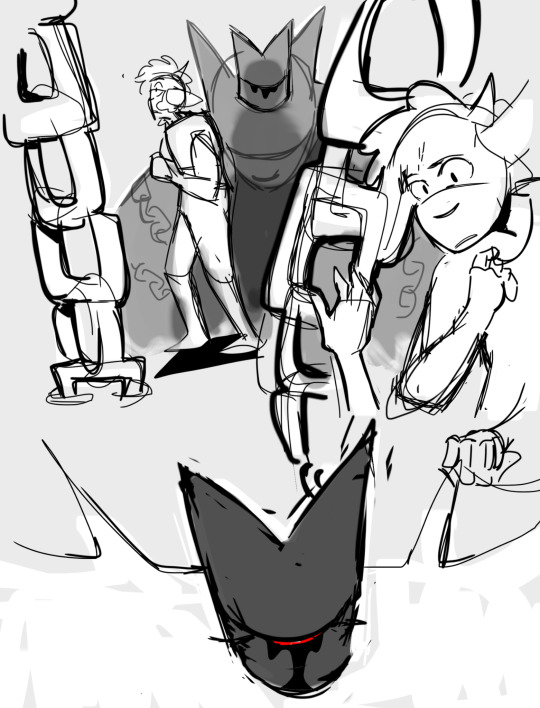
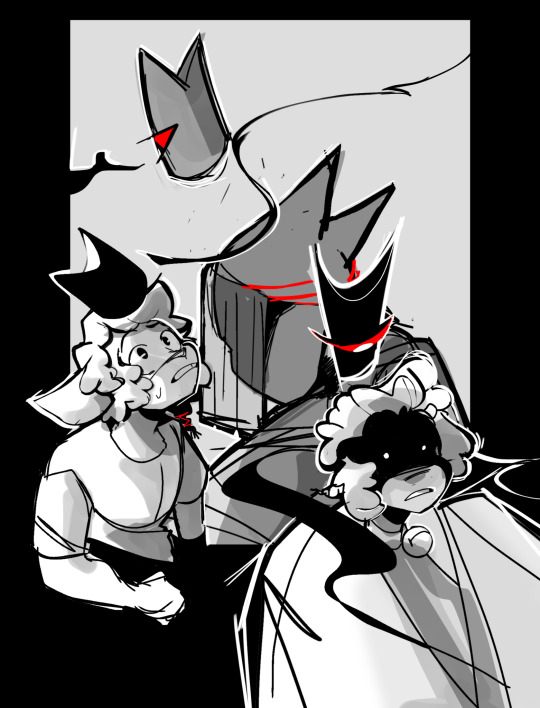
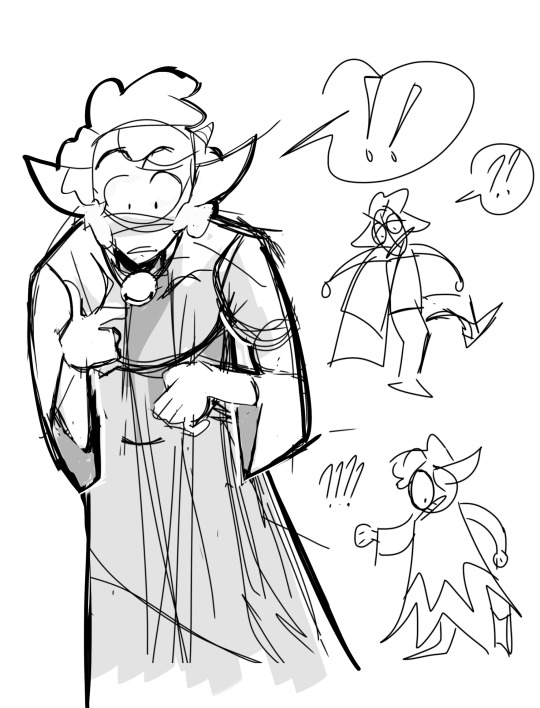
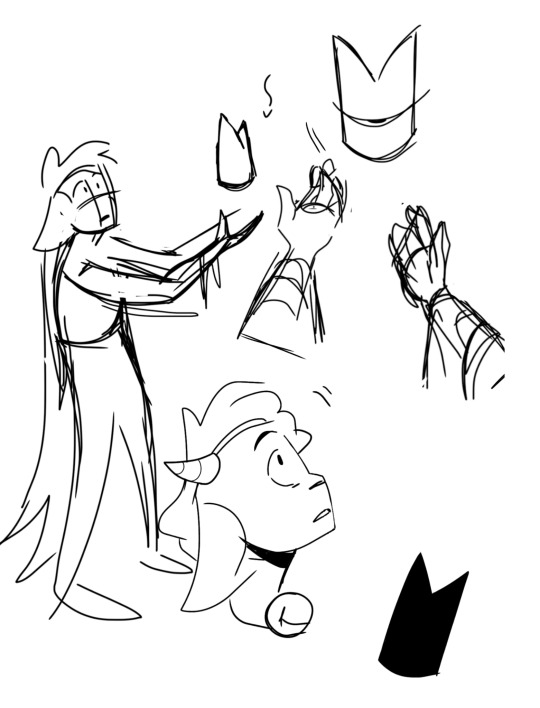
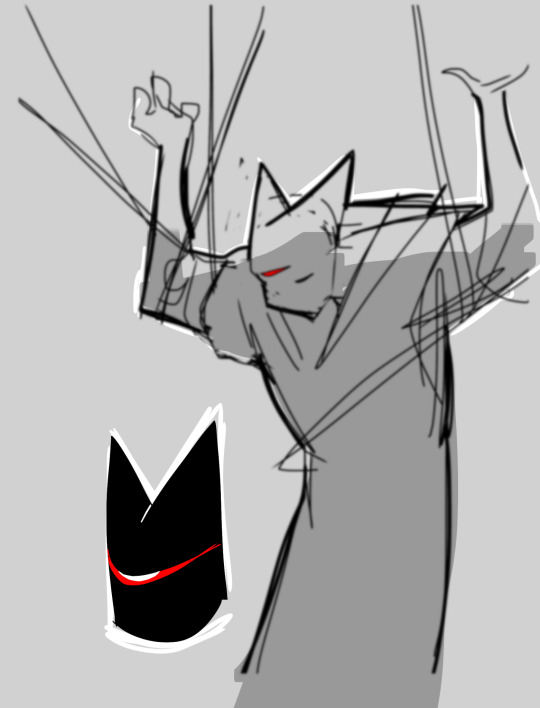
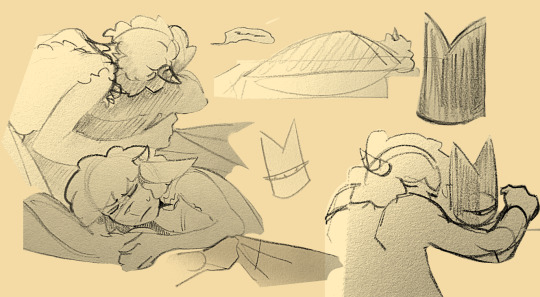
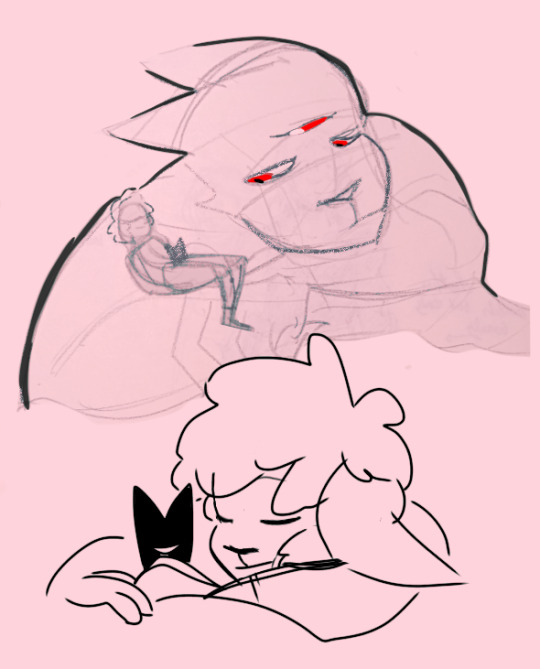
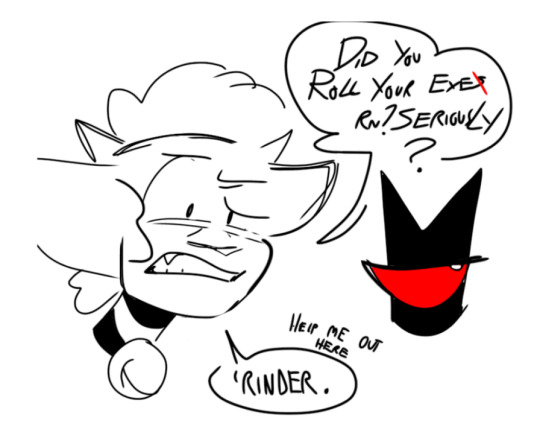
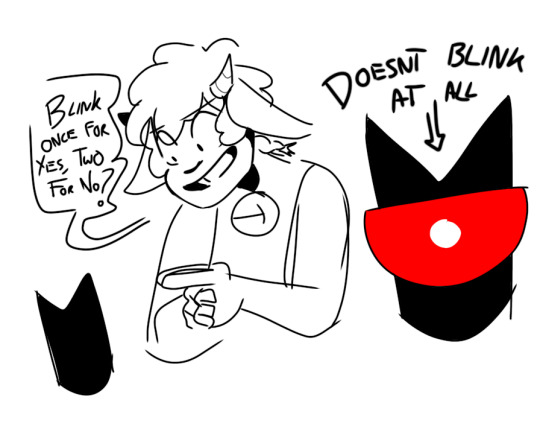
Crown Au: What if aside from being bound down, Narinder was put to sleep, indefinitely? What if the crown was the vessel instead, and the Lamb became it's carrier? And WHAT if there was no prophecy but the Lamb carried on to free him anyway because true love reigns?
Crownrinder??? A crown cannot sit under two brows? NO PROBLEM. Become the crown instead.
#YOU have an Au. and YOU have an Au#did this on my phone also. STILL no computer sorry guys#Narinder: i am resourceful#Narinder: i mean im down to one eye and no limbs but st this point im not complaining#There isnt space for more pictures but I wanted to add a dream sequence. I havent drawn it yet but I see it. Inside my skull.#Cotl#Narinder#the lamb#narilamb#cotl au#i was in such s big art block. slowly coming out of it.#narinder x lamb#my art#cult of the lamb#cult of the lamb fanart#cotl lamb#cotl narinder#cotl fanart#cotl#comic strips
795 notes
·
View notes
Text
What to give a fuck about,while writing your first draft!
I`ve posted a list about things you don´t need to give a fuck about while writing your first draft. Here are things you NEED TO CARE about! (in my opinion)
Your Authentic Voice: Don't let the fear of judgment or comparison stifle your unique voice. I know it´s hard,but try to write from your heart, and don't worry about perfection in the first draft. Let your authenticity shine through your words.
Your Story, Your Way: It's your narrative, your world, and your characters. Don't let external expectations or trends dictate how your story should unfold. Write the story you want to tell.
Progress Over Perfection: Your first draft is not the final product; it's the raw material for your masterpiece. Give a fuck about making progress, not achieving perfection. Embrace imperfections and understand that editing comes later.
Consistency and Routine: Discipline matters. Make a commitment to your writing routine and stick to it.
Feedback and Growth: While it's essential to protect your creative space during the first draft, be open to constructive feedback later on. Giving a f*ck about growth means you're willing to learn from others and improve your work.
Self-Compassion: Mistakes, writer's block, and self-doubt are all part of the process. Give a f*ck about being kind to yourself. Don't beat yourself up if the words don't flow perfectly every time. Keep pushing forward and remember that writing is a journey.
Remember, the first draft is your canvas, your playground. Don't bog yourself down with unnecessary worries.

#writing#writblr#writing advice#writers block#just writer things#creative writing#fanfiction writing#writing motivation#writeblr#original writing#writing reference#writing tips#writers on tumblr#writing resources#writing tip#writing encouragement#writing community#writers#world building#point of view#editing#character creation#dialogue#mine.#words#writingtips#writingadvice
5K notes
·
View notes
Text

ROBLOX BUTTONS








I want to do more but I dont know what games to do 💔💔
F2U! Credits not needed but appreciated

#i learned how to do the gradient text thing WOOOHOOO#roblox#block tales#regretavator#pressure roblox#forsaken roblox#cleaning simulator#rentry#rentry graphics#rentry resources#carrd resources#shiny buttons#imvu badges#stamps#rentry decor
510 notes
·
View notes
Text
Character Flaws and Their Meanings
Impulsiveness : Acts on instinct without careful planning. Perfectionism : Sets unrealistically high standards, leading to self-criticism. Indecisiveness : Struggles to commit to decisions or choose a path. Arrogance : Overestimates one’s abilities and dismisses others. Pessimism : Habitually expects negative outcomes in most situations. Cynicism : Distrusts the motives and sincerity of others. Overconfidence : Places excessive faith in one’s skills, often underestimating risks. Stubbornness : Resists change and refuses to adapt to new ideas. Jealousy : Feels envious of others' success or possessions. Insecurity : Experiences frequent self-doubt and a lack of confidence. Procrastination : Tends to delay tasks, often leading to missed opportunities. Passivity : Avoids taking initiative and relies on others to act. Aggressiveness : Responds with hostility or force rather than reason. Selfishness : Prioritizes personal gain over the welfare of others. Fragility : Is overly sensitive to criticism and easily discouraged. Egotism : Constantly focuses on oneself and one’s own importance. Defensiveness : Quickly rejects or rationalizes away critique or new information. Manipulativeness : Exploits others to fulfill personal needs or desires. Recklessness : Shows a careless disregard for potential risks or consequences. Resentfulness : Holds lingering bitterness and grudges over perceived wrongs. Distractibility : Finds it hard to maintain focus amid competing interests. Impatience : Lacks the willingness to wait, often spoiling opportunities to learn. Perfunctory : Performs actions in a mechanical, uninspired manner. Self-Doubt : Consistently questions personal abilities and decisions. Arbitraryness : Makes decisions based on whim rather than reason or evidence. Rigidity : Is inflexible and unwilling to consider alternative viewpoints. Gullibility : Trusts too easily, often leading to being misled or deceived. Obsession : Becomes excessively fixated on particular ideas or details. Aloofness : Maintains emotional distance, appearing detached or indifferent. Intolerance : Refuses to accept differing perspectives or lifestyles.
Writing Advice for Brainstorming
Mix genres and time periods: Experiment by combining elements from different eras or genres to create unique settings and narratives.
Use "what if" scenarios: Pose unexpected questions (e.g., What if time travel operated on emotions rather than mechanics?) to spark novel ideas.
Draw from diverse mediums: Engage with art, music, or even scientific papers to inspire unexpected plot twists.
Embrace absurdity: Let illogical or surreal ideas guide you; sometimes the wildest thoughts lead to compelling stories.
Reverse clichés: Identify common tropes in your favorite genres and deliberately invert them to create fresh perspectives.
Incorporate personal anomalies: Transform your idiosyncrasies and personal struggles into rich, multi-dimensional characters.
Use mind-mapping: Visually plot your ideas in a freeform way to uncover hidden connections between disparate elements.
#writing#writeblr#on writing#writing tips#how to write#writers block#creative writing#writers and poets#thewriteadviceforwriters#writers on tumblr#writing project#fiction writing#novel writing#writing a book#writing advice#romance writing#writing characters#writing community#writing guide#writing inspiration#writing prompts#writing ideas#writing reference#writing blog#writing resources#writing help#writing software#writerscommunity#writers#writing tips and tricks
10K notes
·
View notes
Text
How to Write Betrayal
Betrayal is a powerful plot element that is represented in countless stories. The gravity of betrayal brings a profound depth to character dynamics, plots, and themes alike, making it an indispensable tool for writers to explore emotions, conflicts, and the complexities of human nature. Let’s explore some quick tips on how to write betrayal!
Behaviour
Secretive actions
Dishonesty
Becoming emotionally distant
A sudden change in routine
Pushing people away
Nervous or fidgety movement
Frequent lying or making up stories
Unexpected aggression or irritability
Unjustified mood swings or emotional outbursts
Increasingly defensive
Interactions
Disturbed interpersonal relationships
Frequent misunderstandings or fights
Withholding information
Avoiding personal discussions
Insincerity in conversations
Frequently cancelling or missing plans
A sudden shift in relationship dynamics
Quick to deflect or place blame
Frequent subject changes
Gradual emotional detachment
Body Language
Avoiding direct eye contact
Defensive stance and crossed arms
Covering mouth or touching face
Shuffling or restless movements
Forcing smiles or laughter
Constantly looking around or at the ground
Stiff, tense posture
Heavy breathing or frequent sighing
Avoiding touch or skin contact
Exaggerated gestures
Attitude
A lack of concern or empathy
Increasingly personal and hurtful arguments
Erratic or unpredictable reactions
Self-centeredness
Insincerity
Dismissive or negative attitude
Callous disregard for other's feelings
A negative or pessimistic outlook
Inability to handle criticism
Withdrawal from relationships
Positive Story Outcomes
In the wake of a betrayal, a story can manifest various positive outcomes that add depth to the plot and its characters. Relationships can be strengthened, showing their resilience. Characters may discover newfound self-reliance and learn valuable lessons about trust and forgiveness, leading to an increase in empathy and understanding, personal growth, and the reinforcement of personal values. These experiences can encourage a clearer understanding of personal boundaries, prompt self-reflection, introspection, and the development of healthier coping mechanisms. Ultimately, these positive outcomes can bring about improved communication and honesty, forming the silver lining in the cloud of betrayal.
Negative Story Outcomes
The aftershocks of betrayal can reverberate throughout your story. This might include an irreparable fracture of trust and damage to relationships. Betrayal can trigger psychological trauma, leading to an increase in suspicion and insecurity. Feelings of inadequacy or self-blame may surface, and characters can experience a heightened sense of isolation. The fear of forming new relationships or trusting others can become overwhelming. There may also be an escalation of conflict or violence and the reinforcement of negative behaviours or patterns. Damaged self-esteem or self-worth may be another repercussion, and this can encourage destructive coping mechanisms.
Helpful Synonyms
Treachery
Deception
Double-crossing
Duplicity
Backstabbing
Two-faced
Disloyalty
Unfaithfulness
Infidelity
Falseness
Perfidy
Treason
Fraud
Deceit
Slander
Misrepresentation
Falsification
Chicanery
Double-dealing
#writers#creative writing#writing#writing community#writers of tumblr#creative writers#writeblr#writerblr#writing inspiration#writing tips#writblr#writers corner#writing quick tips#quick writing tips#writing resources#writing advice#writer#on writing#writers block#beat writers block#let's write#writing betrayal#writing emotions#character development#writing characters#advice for authors#references for writers#helping writers#writing help#help for writers
6K notes
·
View notes
Text
50 Fantasy Prompts: Cultures and Societies. Writers Save this!
1. Luminae
- A society that worships light and revolves around bioluminescent creatures.
- Gesture: Raising both hands to the sky and opening palms to signify receiving light.
- View: Light is considered the purest form of energy and the ultimate source of life.
2. Mistral Nomads
- Wind travelers who harness the power of the breeze for navigation and communication.
- Gesture: Whispering into a small vial and releasing it into the wind, symbolizing sending a message.
- View: The wind carries the voices of ancestors and guides the living.
3. Veilwalkers
- Inhabitants of the mist who can see and manipulate spirits.
- Gesture: Drawing a veil across the face to communicate with spirits.
- View: The world of the living and the dead are separated by a thin veil that can be crossed.
4. Starforged
- People born under specific constellations with unique abilities tied to their birth star.
- Gesture: Touching a constellation tattoo to activate its power.
- View: Stars are the eyes of the gods, watching over and guiding them.
5. Shadecloaks
- Masters of shadow magic, living in perpetual twilight.
- Gesture: Merging fingers into the shadows, symbolizing blending into the darkness.
- View: Shadows are protective, hiding them from danger and giving them strength.
6. Seraphians
- Winged beings who consider themselves guardians of the skies.
- Gesture: Unfurling wings in a greeting, showing trust and openness.
- View: The skies are sacred, and flight is a divine gift.
7. Pyrosages
- Fire-wielders who live in harmony with volcanic landscapes.
- Gesture: Holding a flame in one hand while placing the other hand over the heart, symbolizing passion and life.
- View: Fire is a cleansing force, both destructive and renewing.
8. Aquafolk
- Ocean dwellers with the ability to breathe underwater and communicate with marine life.
- Gesture: Creating ripples in water with a fingertip to convey emotions.
- View: Water is a mirror of the soul, reflecting true feelings and intentions.
9. Silvan Elves
- Forest guardians who blend seamlessly with their environment.
- Gesture: Touching foreheads with a leaf, symbolizing unity with nature.
- View: All life is interconnected through the roots of the great tree.
10. Necrochanters
- A culture deeply connected to the afterlife, able to communicate with and summon spirits.
- Gesture: Drawing a circle with ashes to summon spirits.
- View: Death is not the end but a transformation to another state of being.
11. Stonekin
- Rock-like beings who can manipulate earth and stone.
- Gesture: Pressing a hand to the ground to communicate with the earth.
- View: The earth holds ancient wisdom and the memories of their ancestors.
12. Aetherians
- Masters of air magic, capable of floating and flying at will.
- Gesture: Raising arms and fingers to mimic the flow of air currents.
- View: The air is filled with invisible threads that connect all living beings.
13. Chronomancers
- Time-benders who can manipulate past, present, and future.
- Gesture: Tapping a timepiece rhythmically to alter time flow.
- View: Time is fluid and can be molded to fit the needs of the moment.
14. Dreamforgers
- People who can enter and manipulate dreams.
- Gesture: Weaving fingers in intricate patterns while in a trance.
- View: Dreams are a bridge between realities, holding power and prophecy.
15. Sunseekers
- Pilgrims who follow the path of the sun, gaining strength from its light.
- Gesture: Holding a hand above the heart to swear oaths under the sun’s gaze.
- View: The sun’s light is a witness to all promises, giving them sacred weight.
16. Frostborn
- Ice-dwellers with control over cold and frost.
- Gesture: Exhaling a cold breath to signify agreement or truth.
- View: Ice preserves and protects, holding the essence of life.
17. Songhearts
- A musical culture that uses songs and sound for magic.
- Gesture: Placing a hand over the throat and singing a single note to show sincerity.
- View: Music is the language of the heart and the most honest form of communication.
18. Runecarvers
- Inscribers of powerful runes that grant various abilities.
- Gesture: Tracing runes in the air or on surfaces to cast spells.
- View: Runes are the written words of the gods, containing immense power.
19. Stormcallers
- Masters of weather, able to summon and control storms.
- Gesture: Raising a staff to the sky to summon storms.
- View: Storms are the breath of the gods, bringing both fury and renewal.
20. Plainsriders
- Nomadic horsemen known for their speed and agility.
- Gesture: Drawing a circle in the dirt with a foot to mark territory or signal peace.
- View: The open plains are a vast, sacred expanse that must be respected.
21. Mycologians
- Mushroom-like beings who can communicate through spores.
- Gesture: Spreading spores by tapping a mushroom cap to communicate.
- View: Fungi are the bridge between life and decay, recycling energy.
22. Glimmerfolk
- Glittering, gem-encrusted people who can harness the power of precious stones.
- Gesture: Touching gemstones to channel their energy.
- View: Crystals are vessels of ancient power and knowledge.
23. Thornclad
- A warrior culture clad in thorny armor, known for their fierce combat skills.
- Gesture: Clasping hands with thorned gloves to signify a bond or agreement.
- View: Pain and resilience are intertwined, symbolizing strength.
24. Celestials
- Star-born beings with a deep connection to the cosmos.
- Gesture: Drawing constellations in the air with glowing fingers.
- View: The night sky is a map of destiny, guiding their every action.
25. Inkshapers
- People who can bring drawings and tattoos to life.
- Gesture: Drawing a symbol on their skin to activate a spell.
- View: Ink and art are extensions of the soul, capable of bringing thoughts to life.
26. Mirageweavers
- Desert dwellers who can create illusions and mirages.
- Gesture: Waving hands to create illusions and mirages.
- View: Reality is fluid and can be shaped by perception and will.
27. Echoers
- A culture that communicates and fights using echoes and soundwaves.
- Gesture: Clapping or snapping fingers to create soundwaves for communication.
- View: Sound is a powerful force that can shape the world around them.
28. Ironveins
- Metal manipulators who can shape and control metal at will.
- Gesture: Clenching fists to channel metal manipulation.
- View: Metal is a living force, constantly evolving and reacting.
29. Wyrmkin
- Dragon-like people with scales and the ability to breathe fire.
- Gesture: Exhaling a plume of smoke or fire to show respect or power.
- View: Dragons are the ultimate beings, embodying wisdom and might.
30. Duskborn
- Night-dwellers who gain strength from the moon.
- Gesture: Holding a candle to their chest, symbolizing the light within the darkness.
- View: Darkness is not to be feared, but embraced as a part of the natural cycle.
31. Crystalhearts
- A society with crystalline bodies that can refract light and energy.
- Gesture: Touching their heart crystal to show honesty and purity.
- View: Crystals are the heart of their being, reflecting their true selves.
32. Skyforgers
- Builders of floating cities and airships.
- Gesture: Hammering an invisible anvil to craft objects from thin air.
- View: The sky is a forge, and they are its smiths, creating wonders from the air.
33. Leafkin
- Plant-based beings who can photosynthesize and communicate with flora.
- Gesture: Placing a leaf in the palm to connect with nature.
- View: Leaves and trees are the lifeblood of the earth, nourishing all.
34. Sandshapers
- Desert people who can control and shape sand.
- Gesture: Drawing patterns in the sand to communicate or cast spells.
- View: Sand is a canvas for their magic, constantly shifting and changing.
35. Moonshadow Elves
- Elves who live in the shadows of the moon, skilled in stealth and night magic.
- Gesture: Casting moonlight on their face to invoke lunar power.
- View: The moon is a guide and protector, influencing their magic and lives.
36. Bloodrunes
- Warriors who use their own blood to inscribe powerful runes.
- Gesture: Pricking a finger to draw blood and create runes.
- View: Blood is the essence of life, and through it, they gain power.
37. Dreambinders
- People who can link their dreams to reality.
- Gesture: Twining fingers together to weave dreams into reality.
- View: Dreams are powerful forces that can shape and change the world.
38. Thunderclans
- Tribes who worship and control thunder and lightning.
- Gesture: Stamping feet or clapping hands to summon thunder.
- View: Thunder is the voice of the gods, a call to action and power.
39. Feywilders
- Inhabitants of the fey realm with unpredictable and chaotic magic.
- Gesture: Dancing in a circle to invoke fey magic.
- View: The fey are mischievous yet powerful, their magic a blend of chaos and beauty.
40. Mirrorborn
- People who can step through and manipulate mirrors.
- Gesture: Touching mirrors to travel or communicate.
- View: Mirrors are portals to other realities, reflecting infinite possibilities.
41. Wispwalkers
- Ethereal beings who guide lost souls.
- Gesture: Holding a wisp of light to guide lost souls.
- View: Wisps are guides and protectors, leading them through darkness.
42. Frostweavers
- Ice artisans who create intricate and magical ice sculptures.
- Gesture: Weaving ice crystals into intricate patterns.
- View: Ice is a delicate and beautiful force, capable of great power.
43. Starwardens
- Celestial knights who protect the realms from cosmic threats.
- Gesture: Drawing star maps in the air to invoke celestial power.
- View: The stars are guardians, watching over and protecting them.
44. Emberkin
- Fire-dwellers with control over embers and ash.
- Gesture: Snapping fingers to produce sparks and embers.
- View: Embers hold the remnants of fire’s spirit, representing both the end and beginning of the flame.
45. Oceanborne
- Sea nomads who can control the tides and waves.
- Gesture: Drawing water symbols in the air to summon sea spirits.
- View: The sea is a vast, living entity, a source of mystery and power.
46. Windwhisperer
- Communicators with the wind, able to send messages across great distances.
- View: The sky is a living entity, responsive to the voices of those who respect it.
- Gesture: Moving gracefully to mimic the flow of the wind.
47. Etherseekers
- Gesture: Holding out their hands to draw ether into themselves.
- View: The ether is a vast reservoir of magic, accessible to those who seek it.
48. Twilight Guardians:
- Gesture: Holding a lantern to light the way through twilight.
- View: Twilight is a sacred time, a bridge between day and night.
49. Windwalkers
- Gesture: Moving gracefully to mimic the flow of the wind.
- View: The wind is a messenger of the gods, carrying whispers of destiny and change.
50. Eclipsewatchers
-Gesture: Covering one eye while the other remains open to signify balance
- View: Eclipses represent the merging of light and dark, a time of balance and reflection.
#writer#writing#writer things#writerblr#writerscorner#writing inspiration#writing tips#author#writers and poets#ao3 writer#sci fi and fantasy#fantasy writer#fantasy writing#writing prompt#writer prompts#writeblr#writing inspo#writing help#writing resources#writers on tumblr#writer stuff#fantasy#fantasy series#amwriting#bookblr#fantasy books#writerscommunity#writers block
2K notes
·
View notes
Text
Topics List: Sweets
Word lists may be helpful for some people to overcome writer's block.
CAKES
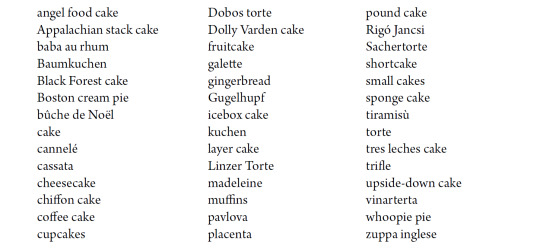
CANDY

CHOCOLATE

CONFECTIONS
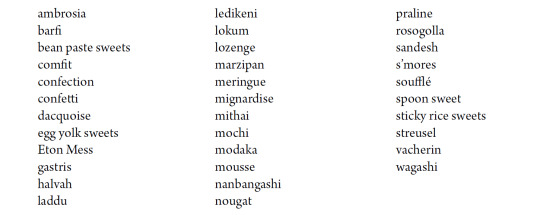
COOKIES

Source ⚜ More: Word Lists ⚜ Topics Lists ⚜ Part 2 ⚜ Writing Resources PDFs
#food#writeblr#langblr#writers on tumblr#spilled ink#topics#writing inspiration#topics list#poets on tumblr#literature#words#writer's block#writing prompt#studyblr#creative writing#poetry#lit#writing reference#sweets#dessert#food history#writing resources
3K notes
·
View notes